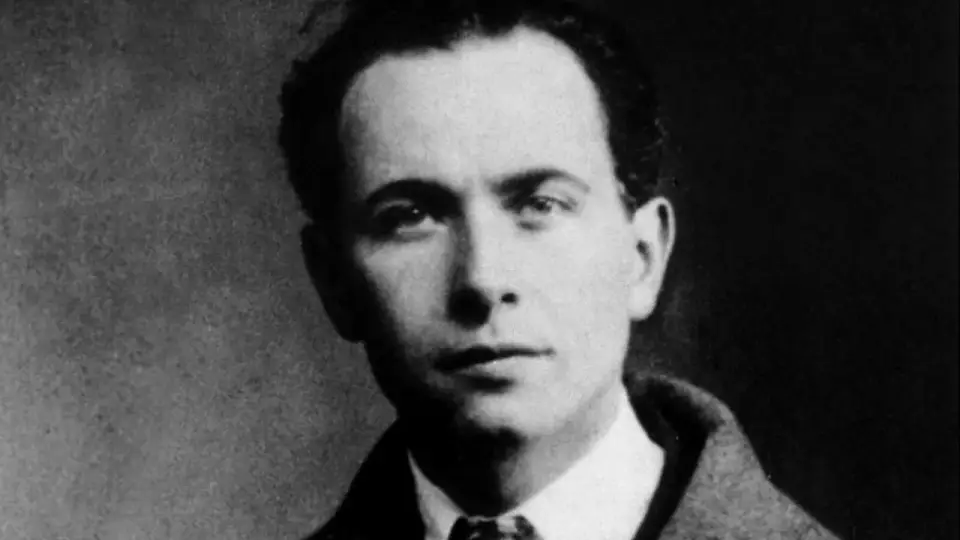Louis Aragon stands as a monumental and deeply controversial figure in 20th-century French literature, comparable only to Victor Hugo in the sheer scale of his work and political engagement. He was a man of perpetual self-contradiction, once saying, “I only ever write to contradict myself.” This makes capturing his life a daunting task, as biographer Josiane Savignot attests while working on his biography.
Table of Contents
This exploration, based on a French radio program from “Une vie, une œuvre,” delves into the laboratory of that biography to untangle the many threads of Aragon: the Surrealist, the Stalinist, the Resistance hero, the scandalous provocateur, and the troubadour of a great, yet troubled, love.
❤️ The Myth of the Perfect Couple: Aragon and Elsa Triolet
One of the central pillars of the Aragon myth is the couple he formed with Russian-born writer Elsa Triolet. Publicly, they were presented as the embodiment of perfect love, a narrative Aragon himself carefully constructed in his poetry. He elevated Elsa to the status of a modern-day Laura, Petrarch’s muse, making her name a constant presence in his work, from Elsa’s Eyes to The Madman of Elsa.
However, a closer look at the poetry reveals a much more complicated reality. The poems are not odes to blissful union but are filled with themes of painful separation, the impossibility of truly knowing another, jealousy, and the solitude within the couple itself. The glorious, unified couple of public image does not match the torn, passionate, and often tragic relationship depicted in the texts.
This contradiction was not lost on Elsa. She once famously demanded that a filmmaker include a scene in a documentary where she knocks on Aragon’s door, only to be told, “You’re bothering me, I’m writing a poem to Elsa.” In a brutally honest letter written late in their life together, she accused him of being impossible to live with:
“It is not easy to talk to you… I reproach you for living for 35 years as if you were running to put out a fire… The normal pleasure of doing something together, you do not know it.”
This tension is perhaps the key to understanding Aragon. As one expert noted, “he felt truly real essentially when he was writing,” suggesting the love he wrote about was, in his eyes, even more real than the life he lived.
☭ The Political Man: From Surrealism to Unwavering Communism
Aragon’s political journey is as complex and fraught with contradiction as his personal life. It began with the trauma of World War I, which instilled in him the belief that his life had to be anchored in history and politics. This led him to Surrealism, where he was a provocative and scandalous figure in 1920s Paris.
In 1927, along with other Surrealists like Breton and Éluard, Aragon joined the French Communist Party. At the time, the party was young, radical, and feared. But while his friends would all eventually leave, disillusioned by Stalinism, Aragon remained a loyal member until his death. This unwavering fidelity, even in the face of the party’s darkest moments, is the central, baffling question for his biographers. He swallowed every bitter pill, defended every party line, and wrote obituaries for Communist dignitaries.
Rumors have long swirled that Elsa Triolet, whose sister was the lover of the great Soviet poet Mayakovsky, was a sort of “seductress aircraft carrier” sent by the Soviets to recruit French intellectuals. However, the timeline doesn’t fit—Aragon joined the party before meeting Elsa, and she herself never became a member. The true reason for his loyalty remains an enigma, a source of frustration for Josiane Savignot, his biographer, who admits, “This is where I get stuck… and I think this is where everyone gets stuck.”
🇫🇷 The Hero of the Resistance
The most universally positive facet of Aragon’s myth is that of the Resistance poet. During World War II, he wrote some of France’s most beloved and enduring poems, such as “Il n’y a pas d’amour heureux” (There is no happy love) and “La rose et le réséda” (The Rose and the Reseda).
These poems, often set to music by artists like Georges Brassens and Léo Ferré, became part of the French national memory. They are celebrated for their musicality, their simplicity, and their powerful message of unity in the face of oppression. “La rose et le réséda,” with its famous line about “He who believed in Heaven / And he who did not,” became an anthem for the alliance between Christian and Communist resisters. During this period, Aragon’s courage and his ability to federate divergent energies solidified his image as a national hero.
✍️ The Final Scandals and “The Lying-True”
After Elsa’s death in 1970, Aragon entered the final, scandalous chapter of his life. For the next 12 years, he seemed to shed his skin once more. Having been, according to his close friend Jean Ristat, bisexual his entire life, Aragon embraced his homosexuality openly. He was a frequent figure in Paris nightlife, constantly provoking the public and confounding his critics.
Some saw this as senility or a dissolute regression into a second youth. Others viewed it as a final, ultimate gesture of life. He continued to write, publishing the extraordinary book Théâtre/Roman (Theater/Novel) as an old man, yet filled with the energy of a young writer. He was, as always, unpredictable.
He famously defined his art as “le mentir-vrai”—the “lying-true.” His work was a constant game of masks, of revealing and concealing at the same time. He believed a biography was “the truth of a lie,” but warned that one must be careful it does not become “the lie of a truth.” When asked how she would title her book, Josiane Savignot mused on calling it Aragon, the Impossible Biography and publishing it as a blank book—a truly Surrealist gesture for a man who remained, until the very end, a profound and brilliant enigma.
